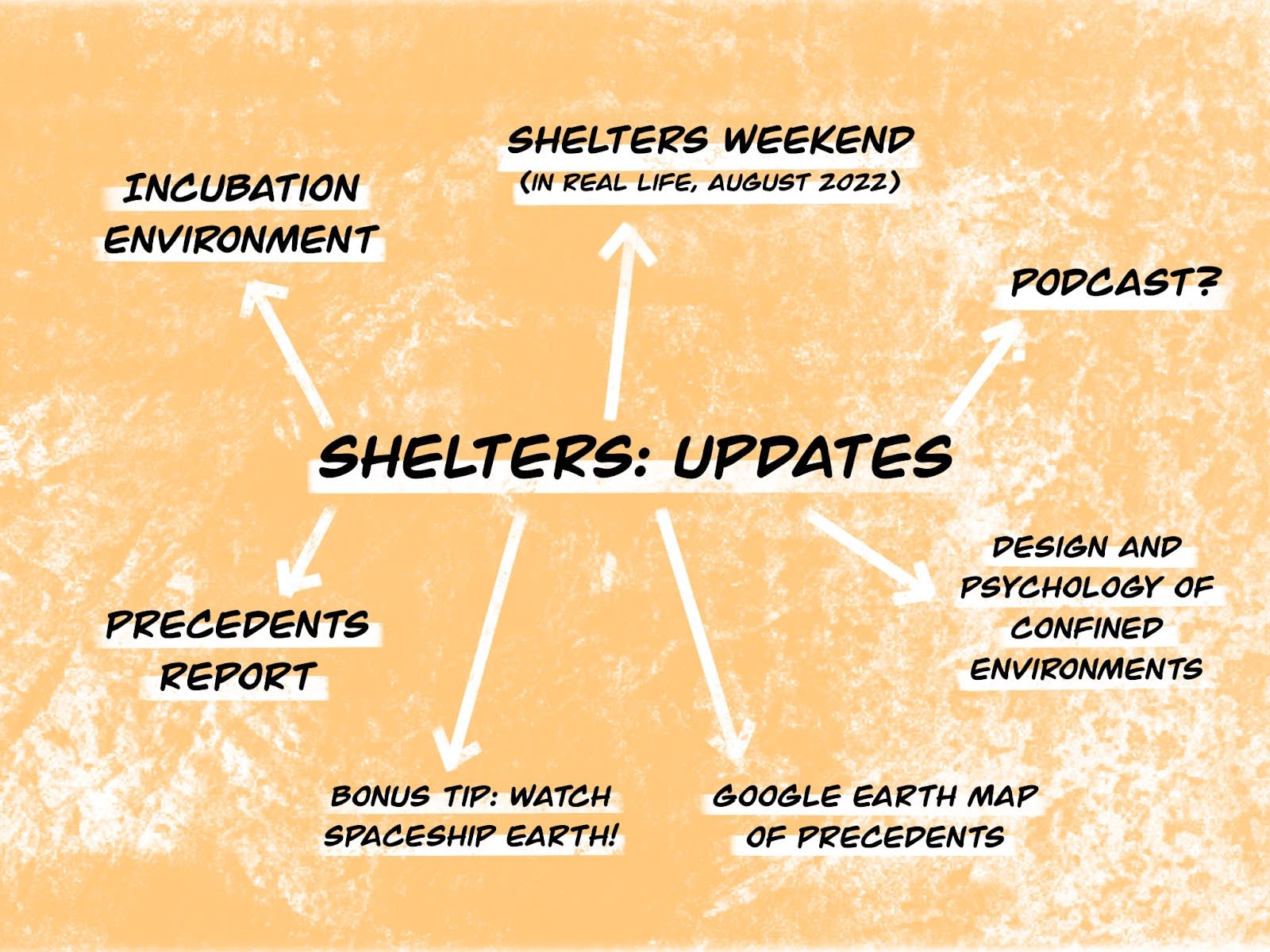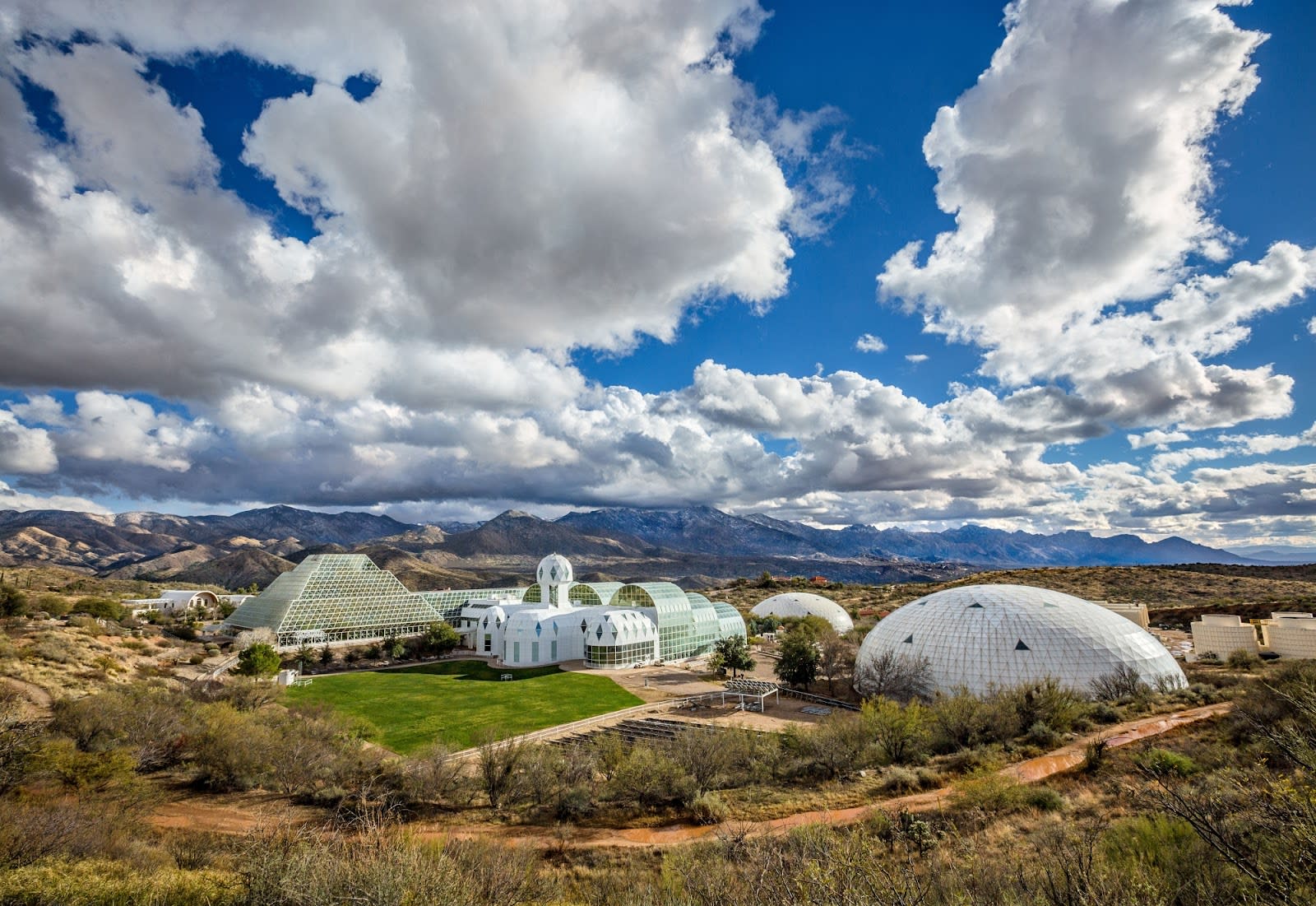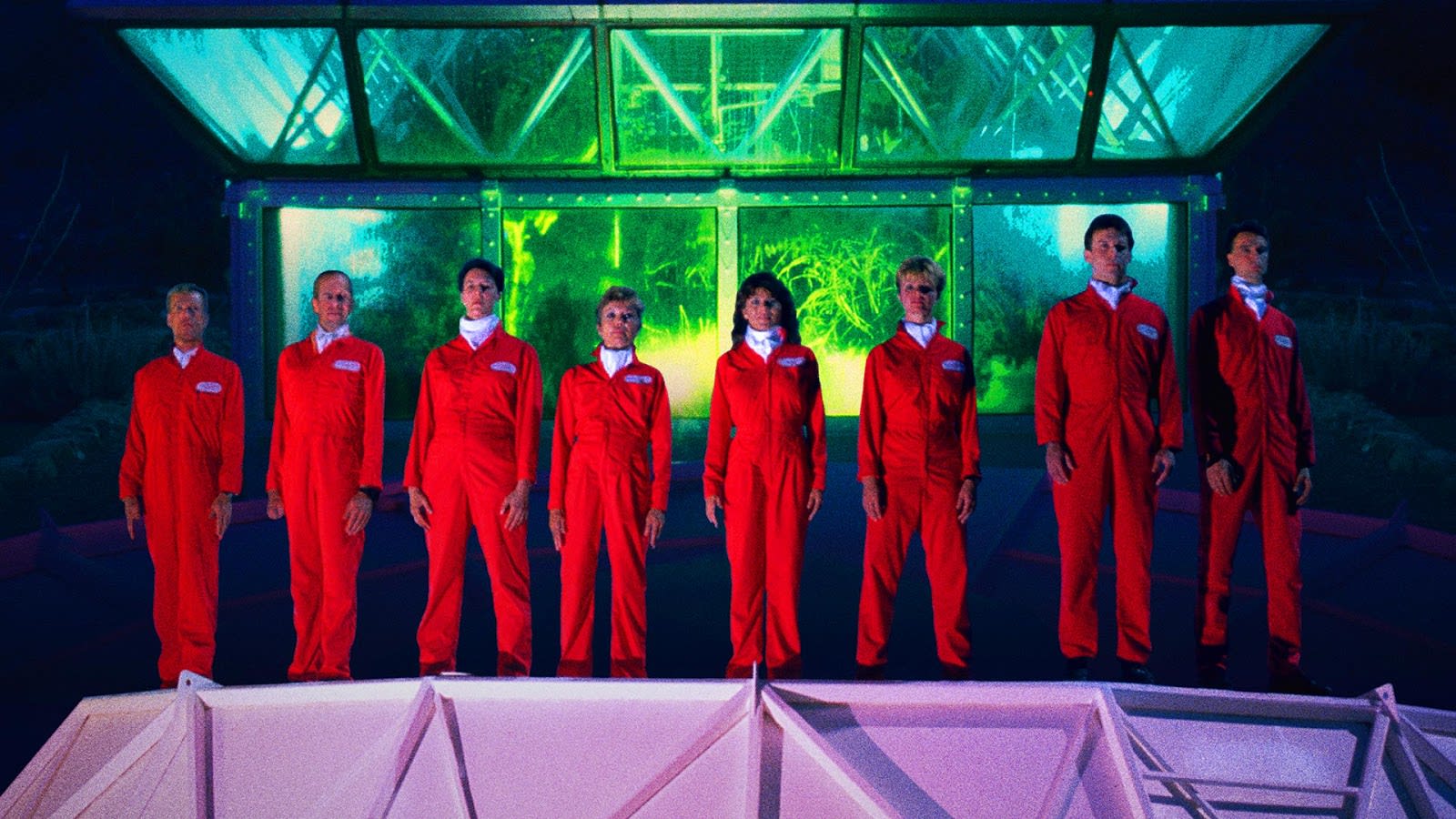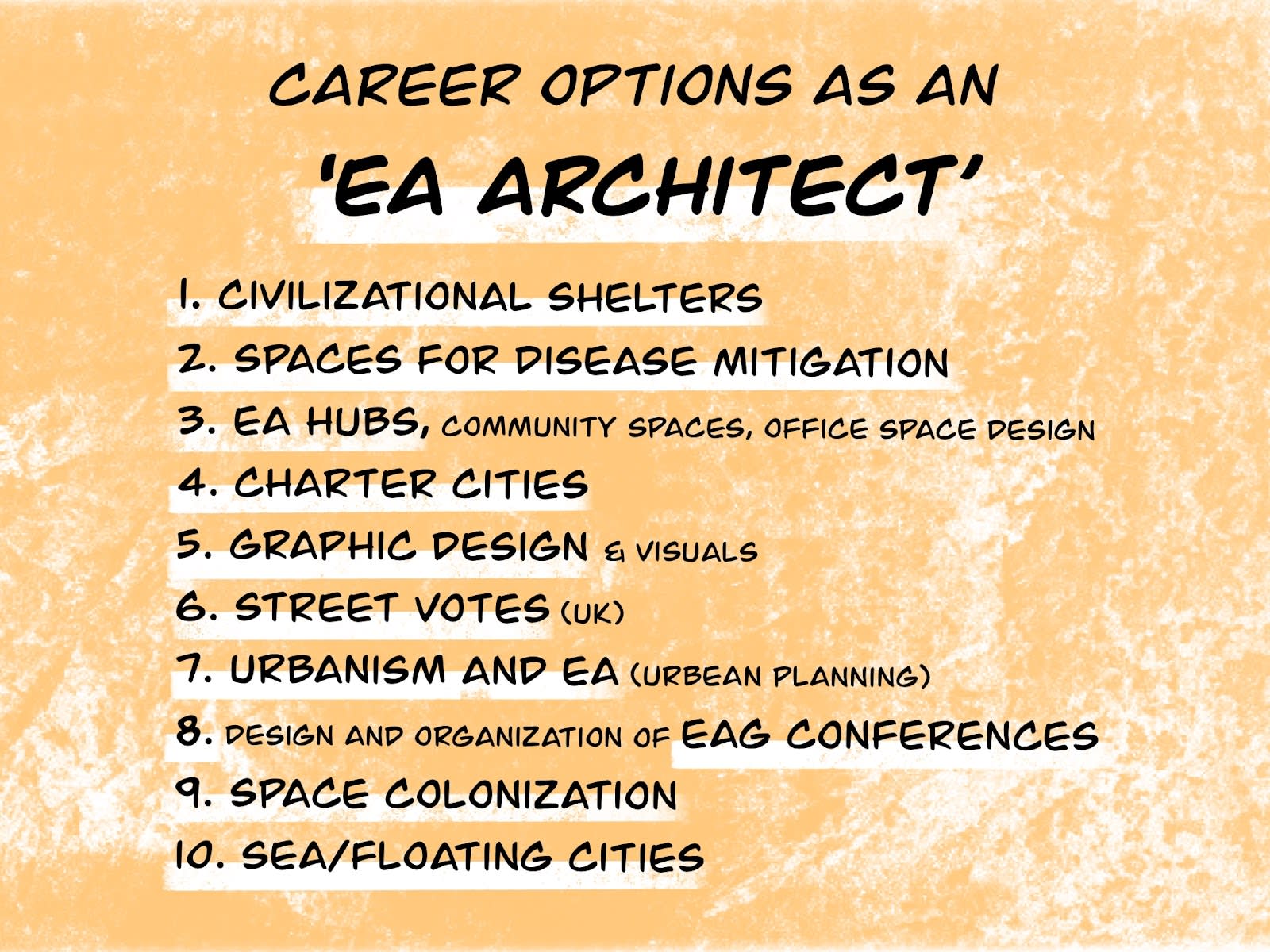‘EA Architect’: Updates on Civilizational Shelters & Career Options

For the past 9 weeks, I have been on the mission of figuring out how to use my education and skills as an architect and urban designer to pursue a high-impact career (see my previous post on ‘Becoming an EA Architect: My First Month as an Independent Researcher’).
In this post, I would like to share general updates on the progress made by me and a growing community of interested people working on civilizational shelters as well as an update on my exploration of different high-impact career options where I can utilise my skills as an architect.
Since I have spent the majority of the last 5 weeks taking on a supporting and operational role for the shelters project, I will start this article by providing comprehensive updates on civilizational shelters in general. I will touch on the Incubation Environment we set up and briefly introduce the upcoming Shelters Weekend. I will further describe my personal interests within shelters, focusing on where I can employ my architectural background, including working on a precedents report, starting a Google Earth precedents map and the possibility of starting a podcast. Watch out for a bonus movie tip regarding shelters!
I will further provide updates on my involvement in office space design and other topics I am interested in as an ‘EA architect’. I will share updates to the ‘Career Options as an EA Architect’ database I have developed. I also want to share a reading list on architecture for anyone here interested in an inspiring read from a different field to theirs.
Increasing Civilizational Resilience with Shelters
Incubation Environment

After I published my 1st article, I was happy to see more people are seriously considering redirecting their careers to working on shelters. We have started to collaborate with Sebastian Lodemann and a couple of anonymous collaborators, with Linch and Ajay joining us as advisors, under the loosely defined “Temporary Incubation Environment for Shelters”.
The goal of this is clear: we want to see well-thought-through solutions for civilizational resilience built/implemented ‘in the real world’ over the next few years. We employ the term “civilizational resiliency” because we plan to consider the widest possible array of proposed solutions from e.g. protecting uncontacted people to creating an underground, reinforced bunker.
If you feel like you should be part of this, fill in this form.
Shelters Weekend

An incredible opportunity for the shelters project has been put forward by Joel Becker and Owen Cotton-Barrat who are looking to organise an event in Oxford this summer, August 5th to 8th. We are looking at posting information about the event within the upcoming two weeks and will be recruiting for the event right after the post. Keep an eye out for this post!
Personal research updates: Shelters Precedents Report
I have been working on the Shelters Precedents Report mapping a broad range of existing shelters and precedents that we might study and learn from, ranging from government refuges for continuity of government programmes, government refuges for citizens, private shelters, islands, submarines, peoples living in seclusion, seed banks and more. I would like to be in the position of sharing a draft that everyone can use to learn more about different precedents soon. Anyone interested in helping me with this (or wanting to help with a particular section you know lots about) or willing to mentor me as I progress my work on the report, feel free to get in touch.
I have further started to map precedents in Google Earth. Feel free to take a look & add any precedents you feel should be in there.
Podcast?

I am currently exploring ways to put the many inspiring conversations I might be having regarding different precedents and shelters projects out there so that more knowledge can be shared on the topic. I am looking at ways of starting a podcast I to talk to professionals from a variety of disciplines, ranging from people involved in megaprojects, suppliers/architects of shelters, researchers who inhabited remote research stations, travelled to space, or perhaps lived in another type of secluded space, people from the military and navy, as well as those involved in research on shelters. If I conclude there’s interest and it generally seems like a good idea (being very mindful of potential risks, I would seek out mentorship on potential infohazards), I will start looking at ways to make this a reality.
Exploring my personal career fit: architecture and shelters

I am becoming more confident I want to devote my next two years to getting involved in working on shelters. Currently, I see the biggest benefit in me working in an operational and communications role, generally helping to connect people and set up teams and infrastructure to kick off work on shelters. I am surprised how engaging I find this role and might be interested in working in a similar role for one of the teams working on shelters in the future or to work as a link that ensures cross-team collaboration (for example through events and conferences). With my architectural background, I might potentially be a good fit in communicating/linking the work of EA researchers with the non-EA world and multidisciplinary experts.
At the same time, I am keen to work on shelters from my professional, architectural perspective. I am beginning my research-led architectural master’s at Oxford Brookes and would like to focus my research on shelters while working for/collaborating with an organization focusing on shelters (and hopefully contributing to setting such an organisation up). I currently envision focusing my master’s design project and thesis on the psychology and design of confined spaces. This, in my mind, is a valuable research topic for all the different scenarios for shelters. I am also curious to explore running test runs to study people’s behaviour in such spaces to help inform who the ideal applicants should be as well as how the space should be designed to promote inhabitants’ well-being and willingness to collaborate. Examples like Biosphere 2 or O’Neill’s colonies suggest that architects can contribute with their ability to work within tight constraints to design attractive and comfortable spaces to maximize chances of success.
I would further like to spend time conducting site visits to see different precedents around the world and am considering setting up a blog/series of articles or a podcast documenting this journey. I am curious whether there would be interest in this.
Shelters and popular culture: movie recommendation, Spaceship Earth

A bonus tip on what to watch if you are interested in shelters: the movie Spaceship Earth about Biosphere 2. My personal reasons for why I think this was a thought-provoking watch and recommend watching it:
Lessons on PR: Biosphere 2 got immense attention from the media and public and made some severe mistakes in its communication with the public, such as not being transparent and generally overpromising. This led to a lot of bad press, from a sensation to ‘fake science’ in the press within days.
The importance of transparency overall.
The thin balance between tight protocols and proceeding with caution vs. being bold and visionary & ‘going for it’.
It seemed to me Biosphere 2 did not run enough test runs & overpromised.
The importance of a shared goal for cooperation. Details on this from Wikipedia:
‘Others point out that the crew continued to work together as a team to achieve the experiment’s goals, mindful that any action that harmed Biosphere 2 might imperil their own health. This is in contrast to other expeditions where internal frictions can lead to unconscious sabotage of each other and the overall mission. All of the crew felt a very strong and visceral bond with their living world (Nelson, Gray, and Allen 2015). They kept air and water quality, atmospheric dynamics and health of the life systems constantly in their attention in a very visceral and profound way. This intimate “metabolic connection” enabled the crew to discern and respond to even subtle changes in the living systems (Alling et al. 2002).’
The importance of oxygen & food. (Linch noted that ’he found it surprising food was less of a bottleneck than oxygen)
Many unexpected things will go wrong: like most useful farm animals dying while cockroaches doing great and spreading all across Biosphere 2.
The importance of rituals, making Biosphere 2 feel like home, having hobbies & other ‘human’ moments, and the importance of beauty of the environment for the mental well-being of the inhabitants.
Biospherians performed a performance before going in about all the things that can go wrong while living inside Biosphere 2 (seems like some/most of these actually happened?)
Everything in the approach to building Biosphere 2 was unusual. Had they adopted a more conventional approach, the project might not have been built at all?
Linch noted that:
‘Internal social cohesion was a lower problem than I anticipated (they had nontrivial issues with cohesion but still managed to stick it through),’ and
‘The first attempt was overall less of a failure than I expected.’
Updates: Career Options as an ‘EA architect’

My database of additional career options has grown to include topics listed below. If you have knowledge about these topics, are interested to find out more or to be connected to people working on them, reach out. If you think some of them are much more impactful than others and my intuition to work on shelters is wrong, I am keen to hear your thoughts. Note that the database is currently not necessarily ordered by highest impact.
Civilizational Shelters
Spaces for disease mitigation
EA hubs, community spaces, office space design
For those interested, I can share the ‘EA office space design database’ I have been working, a design tool for everyone to utilise and avoid ‘reinventing the wheel’ when thinking about setting up a new EA hub.
Street Votes (UK)
Urbanism and EA Slack community (UrbEAn Planning)
We teamed up with Andrew Bailie, Darren Tindall and George McGowan to casually explore the topic. We are looking at ways to:
bring EA thinking to urban planning as well as urban planners and designers to work within EA;
use mapping technology and data to suggest locations for EA neighbourhoods and hubs around the world. We hope that this approach can inform a spatial strategy for EA which helps its existing community flourish and makes it more accessible for people who have yet to engage. This may involve research on how architecture can enable the movement (eg. facilitating interactions);
creating ‘EA neighbourhoods’, places within cities where EAs concentrate while interacting with the wider ‘altruistic’ community of the city, exchanging and sharing their views, inspiring and influencing each other. A lot of thoughts on this topic come from Peter Elam, founder of notribe.org;
improve urban design for mental health
Getting involved in EAGs design, contributing to making EAGs the best conferences ever!
Space colonization
Sea/floating cities
Thank you to all the people who make my journey of becoming an ‘EA architect’ possible. Special thanks to Sebastian Lodemann who has devoted so much of his free time working on shelters and generally being an amazing teammate.
Thanks to Andrew Bailie, Darren Tindall and George McGowan for exploring topics at the intersection of Urban Planning and EA with me. Thanks to Peter Elam for inspiring and exciting conversations on ‘altruistic hubs’ and the importance of neighbourhoods and communities. Thanks to everyone striving to create EA hubs around the world.
Thanks to the regranting scheme and Linch who made it possible for me to devote all my time to this.
Three weeks until the ‘official’ time when my grant ends. I am beyond grateful for being able to say that things are just getting started!
References:
- A Summary of Profession-Based Community Building by (20 Dec 2022 22:08 UTC; 67 points)
- Monthly Overload of EA—July 2022 by (1 Jul 2022 16:22 UTC; 55 points)
- EA Architect: Dissertation on Improving the Social Dynamics of Confined Spaces & Shelters Precedents Report by (6 Jun 2023 11:58 UTC; 42 points)
- 's comment on Apply to join SHELTER Weekend this August by (15 Jun 2022 15:26 UTC; 10 points)
I for one would listen to a podcast about shelters and their precedents! That’s not to say you should definitely make it, since I’m not sure an audience of mes would be super impactful (I don’t see myself personally working on shelters), but if you’re just trying to judge audience enthusiasm, count me in!
Podcasts I’ve enjoyed on this topic (though much less impact-focused and more highly produced than I imagine you’d aim for): “The Habitat” from Gimlet Media; the Biosphere 2 episode of “Nice Try!”
I’d like to second this comment :)
Thanks a lot for this Erin! I give that a listen for inspiration & will post updates on this if/when I decide to go for it.
It’s awesome to see all of your work come together Tereza. I love your description of an EA Architect and what they could contribute. Working on shelters specifically seems like such an excellent use of your talents, and there are so many interesting design problems to tackle.
If you haven’t seen it I recommend that you watch Antarctica: A Year On Ice about thef people that live at the main Antarctica research base year round. It’s basically a survival shelter type environment.
Hi Peter, thank you for the comment! I am actually planning to watch this very soon and am really curious about what I can learn from it, would love to chat about it later!
I really respect your drive in leading this project and was excited to read all the updates!
Would love to view the EA office space design database too : )